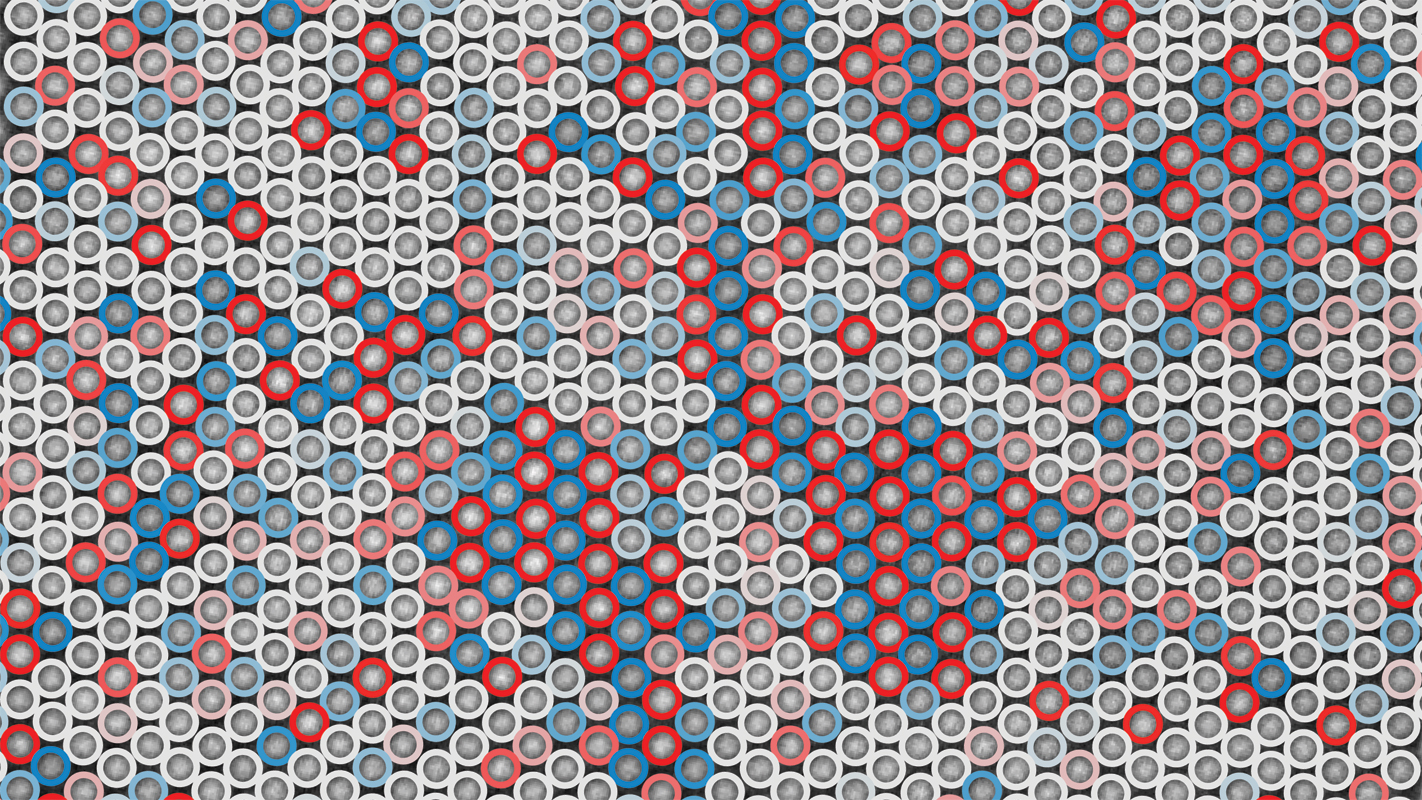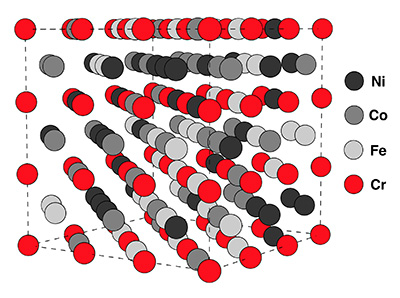Electron Spin Brings Some Order to High Entropy Alloys

For Immediate Release
Researchers from North Carolina State University have discovered that electron spin brings a previously unknown degree of order to the high entropy alloy nickel iron chromium cobalt (NiFeCrCo) – and may play a role in giving the alloy its desirable properties.
“High entropy alloys have garnered a lot of attention over the past 10 years because they have remarkable properties,” says Doug Irving, an associate professor of materials science and engineering at NC State and corresponding author of a paper describing the work. High entropy alloys are materials that consist of four or more metals in approximately equal amounts.

“For example, NiFeCrCo-based high entropy alloys have a good combination of hardness, tensile strength, ductility, and fracture resistance at extremely low temperatures,” Irving says.
“If you look at NiFeCrCo, it has a fixed structure,” Irving explains. “Think of orderly rows of boxes. But which atoms fill which spaces is seemingly random – it seems impossible to predict which element might be in any given box. That impression of chaos is why they’re called high entropy alloys.
“But now we have determined that there is some order in the composition of this alloy,” Irving says.
Specifically, the researchers learned that chromium – and spin – play key roles.
All atoms have electrons, and all electrons have a property called spin. The electrons in ferromagnetic materials – like iron, nickel and cobalt – tend to align so that their spin is oriented in the same direction. But the electrons in antiferromagnetic materials – like chromium – tend to align so that their spin is the opposite of their neighbors.
In NiFeCrCo, chromium can align its spin against its neighbors if it is surrounded by iron, nickel or cobalt. They can all spin up, and chromium can spin down. But if two chromium atoms are next to each other they can’t both align their spins differently from all of their neighbors – because they themselves are neighbors.
In short, chromium’s spin properties force the chromium atoms to be as far apart as possible in the NiFeCrCo structure. And, because there is a high concentration of chromium atoms in the material, this creates nanoscale domains of order with the overall “chaos” of the high entropy alloy.
“Showing that this material has order at the nanoscale will likely lead to new work on how to expand these ordered domains, and potentially manipulate the material’s mechanical properties,” Irving says.
The researchers used a combination of advanced electronic structure calculations, magnetic property measurements, and revolving scanning transmission electron microscopy (revolving STEM) to see what was happening at the atomic scale in NiFeCrCo.
“It’s a powerful example of what can be learned through combining state of the art microscopy techniques with predictions from advanced computational approaches,” says James LeBeau, an assistant professor of materials science and engineering at NC State, co-author of the paper, and the creator of the revolving STEM technique.
The paper, “Spin-driven Ordering of Cr in the Equiatomic High Entropy Alloy NiFeCrCo,” is published online in the journal Applied Physics Letters. Lead author of the paper is Changning Niu, a Ph.D. student at NC State. Co-authors include Alexander Zaddach, Adedapo Oni, Xiahan Sang, and Carl Koch of NC State; and James Hurt III of Furman University. The work was supported by the National Science Foundation under grants DMR-1104930 and EEC-1156762, and by the Air Force Office of Scientific Research under grant number FA9550-12-1-0456.
-shipman-
Note to Editors: The study abstract follows.
“Spin-driven Ordering of Cr in the Equiatomic High Entropy Alloy NiFeCrCo”
Authors: C. Niu, A. J. Zaddach, A. A. Oni, X. Sang, J. M. LeBeau, C. C. Koch, and D. L. Irving, North Carolina State University; J. W. Hurt III, Furman University
Published: April 23, Applied Physics Letters
DOI: 10.1063/1.4918996
Abstract: Spin-driven ordering of Cr in an equiatomic fcc NiFeCrCo high entropy alloy (HEA) was predicted by first principles calculations. Ordering of Cr is driven by the reduction in energy realized by surrounding antiferromagnetic Cr with ferromagnetic Ni, Fe and Co in an alloyed L12 structure. The fully Cr-ordered alloyed L12 phase was predicted to have a magnetic moment that is 36% of that for the magnetically frustrated random solid solution. Three samples were synthesized by milling or casting/annealing. The cast/annealed sample was found to have a low temperature magnetic moment that is 44% of the moment in the milled sample, which is consistent with theoretical predictions for ordering. Scanning transmission electron microscopy measurements were performed and identified the presence of ordered nano-domains in cast/annealed samples throughout the equiatomic NiFeCrCo HEA.
- Categories:


